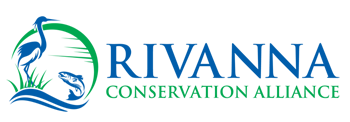RCA’s Bacteria Monitoring Program measures Escherichia coli (E. coli) levels in streams and rivers within the Rivanna River watershed. E. coli are naturally occurring bacteria found in the guts of humans and other animals. When found in the environment, E. coli can signal the presence of fecal waste pollution and suggest other pathogenic organisms may also be present. When E. coli levels are too high, swimming or wading in the water is considered unsafe.
In an urban area like Charlottesville, sewer overflows, damaged sewer pipes, and animal waste are typically the most significant sources of E. coli contamination. RCA’s bacteria monitoring helps protect public health and water quality by identifying these issues in our local waterways.
Where and when do we collect samples?
RCA staff and certified volunteer monitors collect monthly (March to November) samples at 19 river and stream sites. Monthly monitoring provides an overview of water quality at these sites and allows for the identification of contaminated streams needing follow-up monitoring and/or source tracking.
Spring weekly (April to June) samples are collected at seven sites where there is high potential for human recreational contact. These data identify streams that are impaired under Virginia’s revised recreational water quality standard, which requires collecting 10 samples over a span of 90 days.
In the summer, samples are collected every Thursday from high-recreation areas along the Rivanna River at Darden Towe and Riverview Parks, and the Palmyra boat launch. Summer weekly sampling runs from Memorial Day and Labor Day in partnership with the James River Watch.
Click on a site on the map to see recent data collected by RCA Volunteers.
How do we test for E. coli?
To test for E. coli in our water samples, we use Colilert® (IDEXX), an EPA approved method for quickly (within 24-hours of sample processing) and accurately detecting and quantifying total coliforms and E. coli in water samples. This method was added to RCA’s testing protocols in 2018, with prior years (2012-2017) using Coliscan® Easygel® (Micrology Laboratories).
Red symbols indicate that the most recent E. coli reading was above the recommended threshold for recreation (235MPN/100mL) and above Virginia’s water quality standard (WQS; 410 MPN/ 100mL). Yellow symbols indicate that a reading was above the recommended threshold for recreation but below the WQS, while green symbols indicate that the E. coli level was below both the recommended threshold for recreation and the WQS. Grey symbols indicate no recent data – monitoring has concluded for the season.
What do the scores mean?
E. coli levels correspond to the number of E. coli colonies per 100mL of water. The Virginia Department of Environmental Quality set the water quality standard for E. coli in recreational waters as 410 colonies per 100mL, while the Virginia Department of Health have historically stated that recreating in waters with levels higher than 235 colonies per 100mL may increase your risk of exposure to pathogenic organisms. E. coli levels tend to be elevated following big rain events.
To learn about precautions to consider any time you are swimming in a river, lake, or the ocean, check out the “Safely Enjoy Natural Waters” brochure from the Virginia Department of Health.
RCA’s new bacteria data dashboard
Visit RCA’s new Bacteria Data Dashboard to see the latest bacteria results. You can also sign up to receive a notification email when new bacteria results become available!
